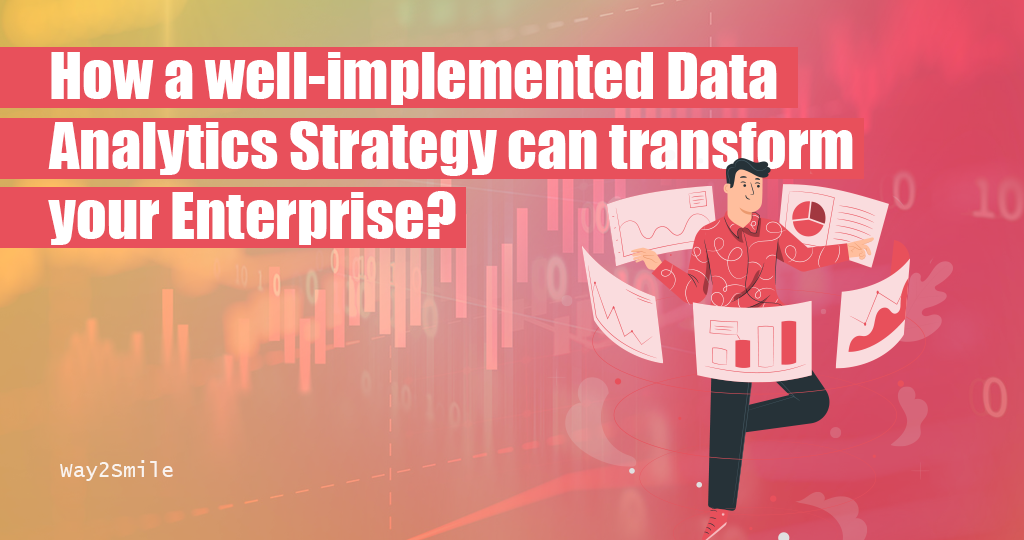Data engineering is probably on the bucket list of almost all enterprises and businesses. This caused a great spike in the number of data enthusiasts, scientists, analysts, architects, and whatnot! It is predicted that by 2025, we will produce about 463 exabytes in a day. Data scientist is currently the hottest job of the year. There is also a downside to this surge. The term data is being used non-contextually and this has led to the saturation of the term. Many enterprises and businesses are overdoing the data approach. The power of data is unparalleled only when you pair it with an equally viable decision-maker.
The ultimate goal of data incorporation is to gain more context about a particular problem or event or phenomenon. The logic is this- more context leads to more filters. More filters lead to streamlined facts. Streamlined facts lead to increased precision while forming a decision.
Looking for data-driven decision making is not the only way to nail the accuracy. In fact, the data-driven approach has become outdated now. There are different types of data science approaches that can help you attain this level of accuracy. For instance, many enterprises that have a solid digital strategy are adopting a data-inspired approach to streamline their operations. Data inspired approach combines the right amount of contextual data, creativity, and experience.
So, the enterprises are crazy about adopting a data strategy. They are all jumping on the data-driven approach, but what should they aim for? What should they work towards? How does a data strategy help with their enterprise's growth? All these buzzing questions are answered below.
First things first…
Does a data strategy make any dent in the enterprise's effort to grow? Straightaway, YES! A well-made data strategy can help scale the enterprise’s operations. When we talk about data strategy, we are talking about the analytics part of the strategy for the most part. The purpose of the data is to be analyzed, to draw conclusions from the observation. Leveraging technology increases the scale of observation. An enterprise is generally a large-scale business operation that has various departments that has to function as one. With the rapid digitalization of enterprises, the need for a strong data architecture is now more than ever.
A large organization should get into effective data management. Even a small change towards enhancing the operations will lead to the creation of better overall efficiency. Also, by covering this small pothole, large organizations could save a fortune. An enterprise is a larger-than-life institution as many people and communities are dependent on the functioning of that particular body. So, they have to be more careful when they use the resources available in their hand. Enterprises need to see the big picture and should focus on moving towards the future while retaining the efficiency at the present. Such complicated and high-stake responsibility has always been there for the C-suite leaders of the enterprises. Leveraging data can help take the load off their backs and make space for efficient resource management and operational efficiency.
How can enterprises leverage data analytics?
First of all, data analytics is not a static domain. The mode of analysis keeps changing over time. However, the most efficient channel of analysis is by leveraging technology. For example, big data analytics requires a lot of computing power as there are different data points and sources. The system creates data every second. The complexity of the data also increases as the number of sources increases. In an enterprise, it is important to understand the different dimensions of the data that it produces or more like has. Internal data analytics like employee data, inventory data, stock management, logistics data, all the resource-related data including money can help provide valuable insights to the decision-making body while making a decision.
For instance, consider this recent pandemic. It has slowed down a lot of business operations and the markets have been completely shut down for almost a year. An enterprise or a larger business organization needs to stay on their toes to form effective decisions to keep the show running. Many enterprises that didn't have a clear idea of the future were forced out of the race. To deploy such a large-scale plan is crucial to keep the organization afloat. Even a small miscalculation could break the business. In such cases, it is better to go with the right amount of facts and experience to get out of the situation.
Data analysis can also help you assess the situation, foresee an event, understand why a particular event takes place, and even create a solid plan to reach a particular goal. The 4 major types of data analytics can help your enterprise to address these issues and help you provide great insights on the operations.
- Descriptive data analytics
- Diagnostic data analytics
- Predictive data analytics
- Prescriptive data analytics
Each of these analytics serves a specific function and combinedly can create and answer valid questions required for the enterprise's growth. addressing these questions can make a significant change in the way your enterprise carries the operations.
Given the present market indicators, enterprises should focus on going beyond the data-driven strategy. User-retainment seems to be the primary factor that pushes or expands any given market. Rapid digitalization has helped users to adopt a digital approach that minimizes human interaction as much as possible. But this demography is rapidly changing. Users now want to use this digital medium to get in touch with the users quickly instead of completely replacing them! Incorporating technologies like AI and ML can also elevate the data analytics process as a whole. An enterprise data analytics strategy needs to be refined to accommodate all the functions of the organization- both internal and external.
Enterprise mobile app solutions and data strategy
Enterprise mobile app solutions can facilitate the enterprise data strategy by a great mile. They can act as a channel that collects and accumulates data from the employees as well as external users. The best part about an enterprise mobile application is the segregation and centralization. A central database is fragmented according to the different departments an enterprise has. A mobile application makes it easy for the employees to access the data or to record an event. The back-end system is also streamlined to ensure the level of access an employee gets. It can also use the accumulated data for analytics and create a dashboard of the chosen metrics. This helps people to assess their levels without even breaking a sweat. The bottom line of a data analytics strategy is to simplify. Simplification is why enterprises should leverage technology for better optimization.
Concluding,
Data inspired approach over data-driven approach can help an enterprise gain valid insights on their operations. Leveraging data is important for any large organization but what's more important is the extraction of quality data. Slacking on the quality of the data will have a huge impact on the outcome of the analytics.







